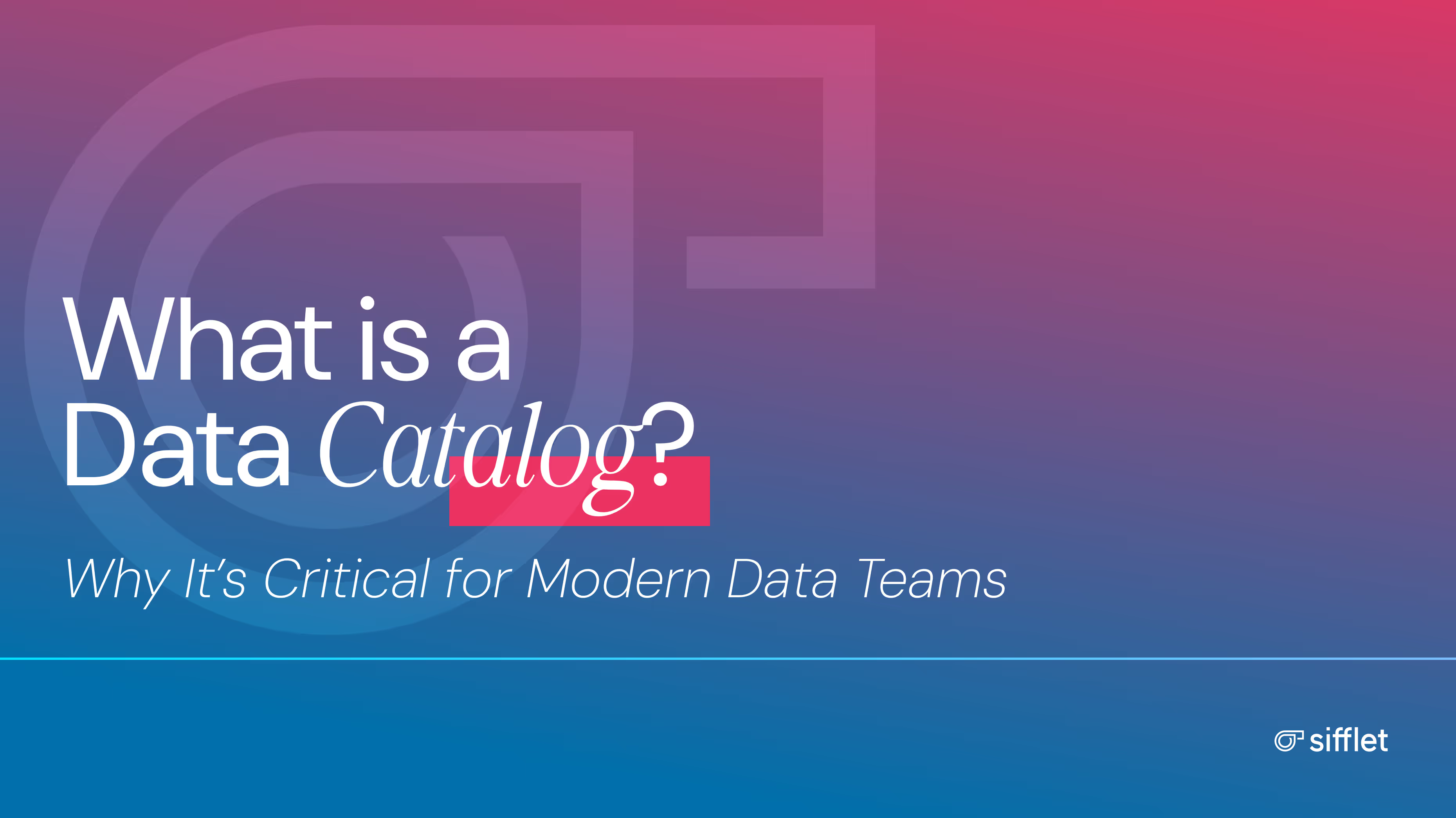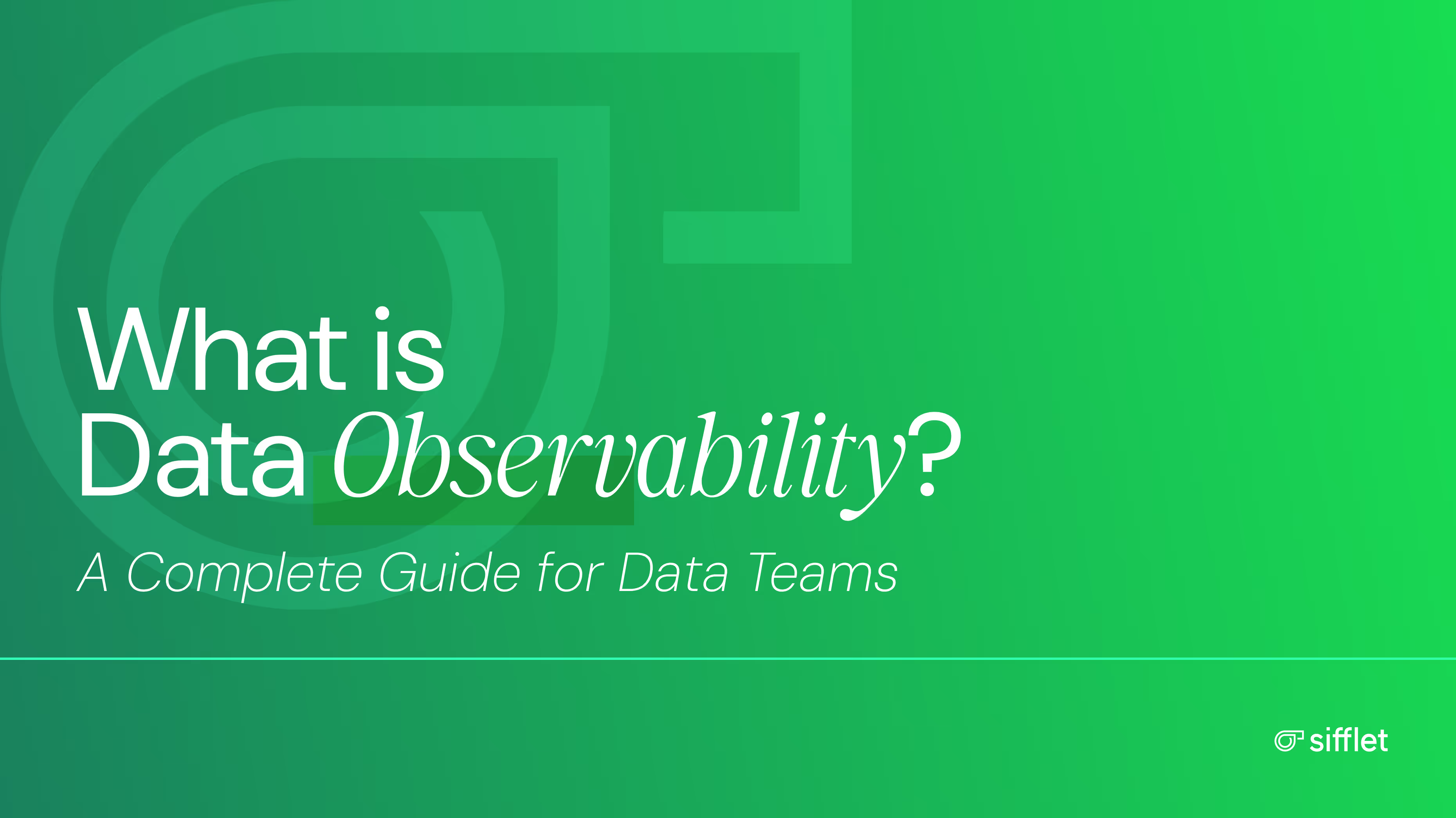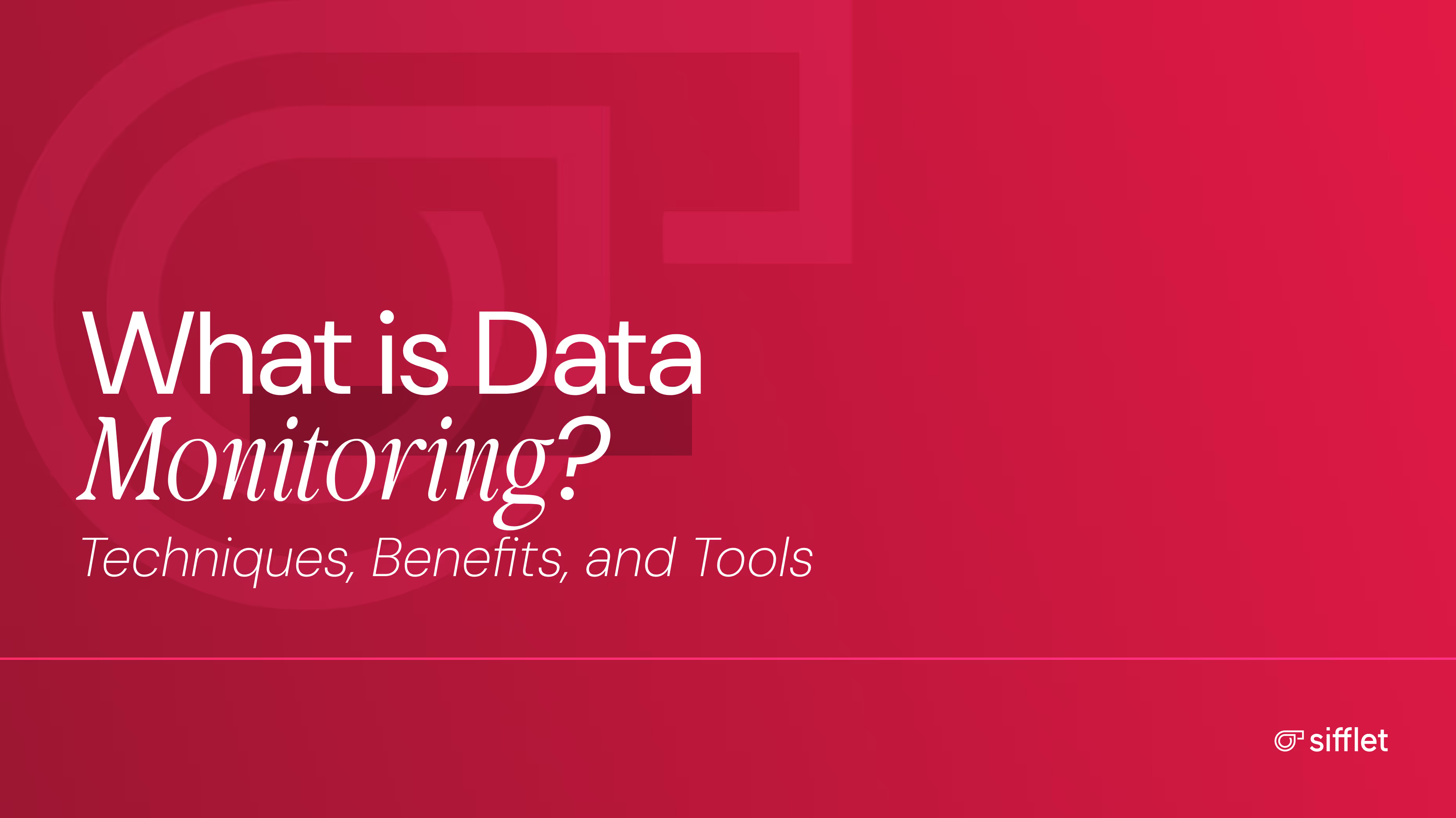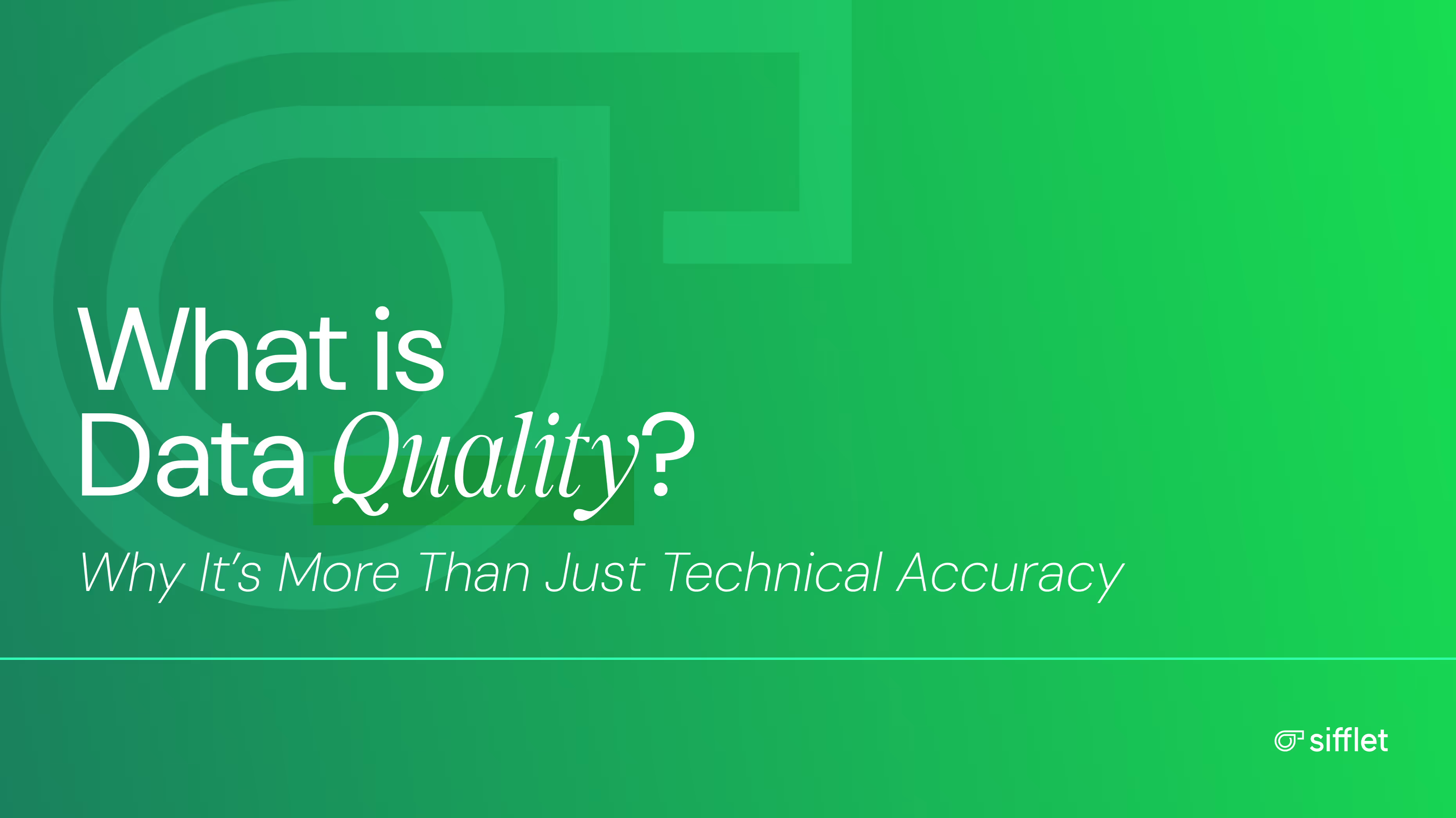Definition
A data catalog is a centralized inventory and metadata management system that helps organizations discover, understand, and govern their data assets across all systems and platforms.You can think of it as the library card catalog for an organization's data, providing searchable information about what data exists, where it's located, what it means, and how it can be used.
Understanding Data Catalogs
From spending hours hunting for the right data set to wondering whether you can trust a particular report or even struggling to understanding what a crypitc column name actually means, understanding data has become one of the biggest challenges facing businesses today.
As enterprises generate and collect more data than ever before, they need a dedicated system to help them keep track of and organize their data.
Enter the data catalog.
Unlike a traditional database that stores the actual data, a data catalog stores information about your data. It's used by data engineers who need to understand system dependencies, analysts looking for the right datasets for their projects, and governance teams ensuring data compliance and quality across the organization.
Example
At a major bank, different divisions are sitting on goldmines of customer data but can't leverage it effectively. The retail banking team tracks customer demographics and transaction patterns in their core banking system, while the mortgage division maintains loan performance data in a separate origination platform, and the wealth management group uses a third-party system for investment portfolios. Credit risk analysts have their own databases, and the fraud detection team works with real-time transaction feeds that nobody else can access.
When regulators request a comprehensive report on the bank's exposure to a specific geographic region, each department scrambles to pull their own data. Retail banking reports one set of customer numbers, mortgage shows different exposure calculations, and wealth management can't easily correlate their high-net-worth clients with the bank's other services. The data exists across multiple systems, but there's no unified way to discover what's available or understand how customer relationships span different products.
Compliance is an even bigger headache. Some datasets contain Personally Identifiable Information (PII) subject to strict banking regulations, but there's no clear documentation of data lineage or access controls. When auditors ask how customer data flows through the bank's systems, teams spend months reconstructing the information manually. It's a regulatory nightmare.
With a proper data catalog, this fragmentation disappears. The bank creates a centralized inventory where every customer dataset, risk model, and compliance report is documented with clear business definitions and regulatory classifications.
Teams can search for "customer exposure" and immediately see all available datasets across divisions, their data quality indicators, and compliance status. The catalog shows that certain customer identifiers are consistently used across all systems, enabling accurate cross-division reporting.
The next time regulators request comprehensive risk reporting, they're working with data that's easily discoverable, properly classified, and consistently defined across all banking divisions. That translates directly into faster regulatory responses and more confident risk management decisions
A data catalog isn’t just another piece of infrastructure, it’s the foundation that turns data chaos into clarity.
The banking example highlights a universal problem: data exists everywhere, but if teams can’t find it, understand it, or trust it, it might as well not exist. A data catalog solves this by making data searchable, understandable, and trustworthy, all at once. It centralizes documentation, adds context through business definitions, and reinforces trust with quality indicators and governance controls.
For business leaders, that means faster decisions and lower compliance risk. For technical teams, it’s fewer ad hoc requests and more time building. The result is an organization that actually uses its data, not just stores it.
Tell Me More…
What is a data catalog?
Why do you need a data catalog?
What types of data assets are stored in a data catalog?
Metadata captured in a data catalog and why
How to manage a data catalog?
How to build a data catalog?
What is a Data Catalog?
A data catalog is a system that allows you to find, understand, and govern your data assets across your data platform. It acts as an intelligent search layer that lays over your data landscape, making it easier to locate data sets, interpret their meaning, and assess their quality.
A data catalog doesn’t store data itself, it captures and organizes metadata, or data about your data. This includes tables, fields, dashboards, pipelines, and more. Metadata can range from technical (schemas, formats) to business (definitions, owners), and even operational (usage stats, lineage, quality metrics).
Data catalogs are essential tools for data engineers managing pipeline dependencies, analysts searching for trusted data, and governance teams enforcing policies and compliance. They form the backbone of a modern data stack, connecting people to data with context, consistency, and control.
Goals of a Data Catalog
A well-implemented data catalog serves four fundamental purposes that directly impact your organization's data maturity and business outcomes:
1. Discoverability
Improved data discoverability is the most immediate benefit and goal of a data catalog. Instead of relying on tribal knowledge or endless Slack threads, teams can search and find data sets in minutes.
2. Trust and reuse
One of the costliest problems in data management is duplication of assets.
When teams can’t find existing assets, they often recreate them with slight differences. A data catalog provides the context they need to confidently reuse what already exists.
3. Self-serve analytics
A data catalog allows youand every member in your organization to explore data autonomously.
With access to clear definitions, quality indicators, and usage examples, analysts can move faster without leaning on technical teams.
4. Compliance and governance
A data catalog makes it much easier to manage data as regulations grow, offering the visibility and documentation needed to demonstrate lineage, access controls, and usage patterns during audits.
Features and Capabilities
Unlike previous generations of data catalogs, modern data catalogs go far beyond simplistic data dictionaries in terms of features and capabilities.
Today, they’re sophisticated systems that have been designed to automate much of the traditionally manual work of data documentation and discovery.
Here’s an overview of the functionality included in modern data catalogs:
- Automated metadata ingestion keeps your data catalog up to date without manual effort. It connects to your databases, warehouses, and BI tools to capture schema changes, table stats, and usage patterns in real time.
- Business glossary definitions align technical and business teams. When “customer” means “active paying subscriber” and not just any site visitor, analytics becomes more consistent and trustworthy.
- Advanced search and filtering help users quickly find what they need using natural language, tags, or filters based on freshness, quality, or domain.
- Data profiling and quality indicators offer quick insights into completeness, uniqueness, and potential issues, so teams know if a dataset is fit for use before diving in.
- Lineage and tool integrations connect the catalog to your broader ecosystem. Teams can trace data from source to dashboard, understand dependencies, and assess downstream impact.
Why Do You Need a Data Catalog?
Simply put, modern teams can’t operate without a data catalog.
Why?
Because poor data discovery isn’t just an inconvenience, it’s a silent cost center. Time spent searching for datasets, second-guessing definitions, or recreating work leads to misalignment, lost productivity, and flawed decision-making. A data catalog solves these issues at the root.
First, it establishes a single source of truth across teams.
When Marketing, Sales, and Customer Success all use the same definition of a “qualified lead,” alignment follows naturally, resulting in fewer debates and smarter decisions.
Secondly, it speeds up onboarding and exploration.
New hires no longer have to rely on tribal knowledge to understand your data ecosystem. Instead, they gain instant access to documented datasets, business context, and quality indicators, which can shorten ramp-up time from weeks to days.
Additionally, it strengthens compliance and audit readiness.
As data regulations tighten, catalogs offer the documentation and traceability needed to prove data lineage, access policies, and usage patterns. When auditors come calling, you’re not scrambling, you’re prepared.
Finally, a catalog enables proactive data quality and lineage workflows.
When a key data source fails, you can instantly surface every downstream dashboard or report that’s impacted, turning firefighting into fast resolution.
Ultimately, a data catalog democratizes data knowledge. It moves critical information out of Slack threads and individual heads and into a searchable, governed system, one that scales with your business.
What Data Assets are Stored in a Data Catalog?
A modern data catalog isn’t limited to tables and columns. It’s a dynamic map of your entire data ecosystem, from raw inputs to refined insights, so it brings structure, context, and visibility to every layer of your data stack.
At the foundation are your tables and schemas, or the structured data stored in cloud warehouses and databases. But a good catalog goes beyond schemas.
It adds business context, defining what each table represents and how it should be used, so teams don’t have to guess.
Then come your dashboards, reports, and KPIs.
These are the artefacts where raw data becomes decision-making insight. Cataloging these assets helps teams trace which datasets power which dashboards, making it easier to assess the impact of upstream changes.
Increasingly, organizations must also catalog APIs and machine learning features.
As data products become more sophisticated, semi-structured and unstructured assets play a bigger role. Without visibility into these components, governance and reuse become afterthoughts.
Your data pipelines and notebooks hold the transformation logic, giving you understanding into how raw data is cleaned, joined, and prepared for use. Capturing these processes in the catalog supports both lineage tracking and faster debugging when issues arise.
Lastly, support for cloud-native infrastructure is table stakes.
A solid catalog integrates with platforms like Snowflake, BigQuery, and Redshift to ingest metadata in real time, ensuring your catalog reflects the living state of your data.
Together, these assets form the connective tissue of your organization’s data. A comprehensive catalog makes them visible, understandable, and governable, so your teams can move with confidence, not guesswork.
Metadata That Gets Captured in a Data Catalog and Why
Metadata is data about your data and it’s what makes a catalog truly useful. Without it, your catalog is just a list. With it, it becomes a powerful system for discovery, trust, and governance.
In order to effectively access information in your data catalog and make the most out if it, it’s essential to understand the different types of metadata it captures and why each one matters.
- Technical metadata forms the structural backbone.
It includes schemas, formats, file sizes, and data types.
Automatically ingested from systems like Snowflake or Redshift, this metadata helps data engineers assess dependencies, compatibility, and system health, while keeping documentation current without manual upkeep.
- Business metadata is where meaning comes in.
This includes data definitions, ownership, business rules, and KPIs.
Often manually curated, it’s the metadata that joins raw tables and strategic insight. For analysts and business users, this is what turns a column name into a decision-making asset.
- Operational metadata adds behavioral context.
Tracking usage patterns, refresh schedules, query logs, and SLA adherence. It answers key questions: Is this data reliable? How often is it updated? Who’s using it?
For teams managing uptime and performance, this metadata is critical to solve issues and plan.
- Governance metadata ensures accountability.
It documents who owns what, how sensitive data is classified, what access controls are in place, and how policies are enforced.
As regulations grow more complex, this layer provides the transparency and control needed for compliance audits and internal risk assessments.
Together, these four types of metadata turn your data catalog into a living system: one that not only maps your assets but also explains how they’re used, governed, and trusted across every team.
How to Manage a Data Catalog Effectively
A data catalog isn’t a “set it and forget it” tool. Its value compounds only when paired with clear ownership, strong governance, and consistent upkeep.
Start by establishing data governance and stewardship roles.
Assign data stewards to specific business domains, or people responsible for curating definitions, validating metadata, and keeping documentation accurate. Without clear ownership, even the best catalog becomes outdated and unreliable.
Next, enforce naming conventions and data standards.
When teams follow consistent patterns for naming datasets and defining terms, the catalog becomes exponentially more discoverable and trustworthy. Consistency is what turns a metadata repository into a usable interface.
Schedule regular metadata reviews.
While technical metadata often updates automatically, business context does not. Definitions evolve, ownership changes, and KPIs shift. A quarterly or biannual metadata audit ensures the catalog reflects reality and not legacy assumptions.
Finally, connect your catalog to broader data initiatives.
The most impactful catalogs are integrated with observability, quality monitoring, and lineage tools. This turns the catalog into more than a documentation layer, it becomes a living control center for data health, reliability, and usage.
Done well, managing a catalog isn’t overhead, it’s leverage. It saves time, reduces risk, and unlocks cross-team collaboration at scale.
How to Build a Data Catalog
Building a data catalog is more than a technical roll out. It’s a cross-functional initiative thatblends systems integration with cultural change.
Start by connecting your catalog to the most critical data sources, ****typically your core databases, cloud data warehouses, and BI tools. This allows you to begin automatically ingesting technical metadata like schemas, table structures, and refresh logs.
But metadata alone isn’t enough. Involve both technical and business stakeholders from day one.
Engineers bring the systems knowledge needed for integration and automation; business users contribute the definitions, rules, and ownership context that make the catalog actually usable.
To increase its value, integrate the catalog with observability and monitoring tools.
A catalog that tells you what data exists is helpful. A catalog that tells you how fresh, reliable, and trusted that data is? That’s transformative.
Last but not least, consider your build vs. buy strategy.
Open-source tools like Apache Atlas offer flexibility but demand more in-house resources, whereas cloud-native platforms offer faster deployment and SaaS solutions like Sifflet’s integrated data catalog combine ease of setup with advanced functionality, allowing you to move quickly while scaling intelligently.
Beyond Your Data Catalog…
A data catalog is the foundation. But on its own, it’s not enough. Knowing what data exists doesn’t tell you if it’s accurate, fresh, or trustworthy.
If you want to succeed, you should combine cataloging with observability and governance, creating an integrated ecosystem that supports discovery, quality, and decision-making all in one place.
Sifflet takes the traditional data catalog further by linking technical metadata to business impact, providing a real-time view of how your data behaves and why it matters.
With built-in agents for automated lineage tracking and anomaly detection, Sifflet reduces the manual lift of maintaining metadata accuracy and data quality. It doesn’t just help you find your data, it helps you trust it.
And for organizations with existing catalogs like Collibra or Alation, Sifflet’s platform is fully compatible, enhancing your investments by layering in observability, monitoring, and context-aware insights.
The result? A catalog that doesn’t just describe your data but empowers your teams to use it with confidence.
Are you ready to try Sifflet today?













-p-500.png)
